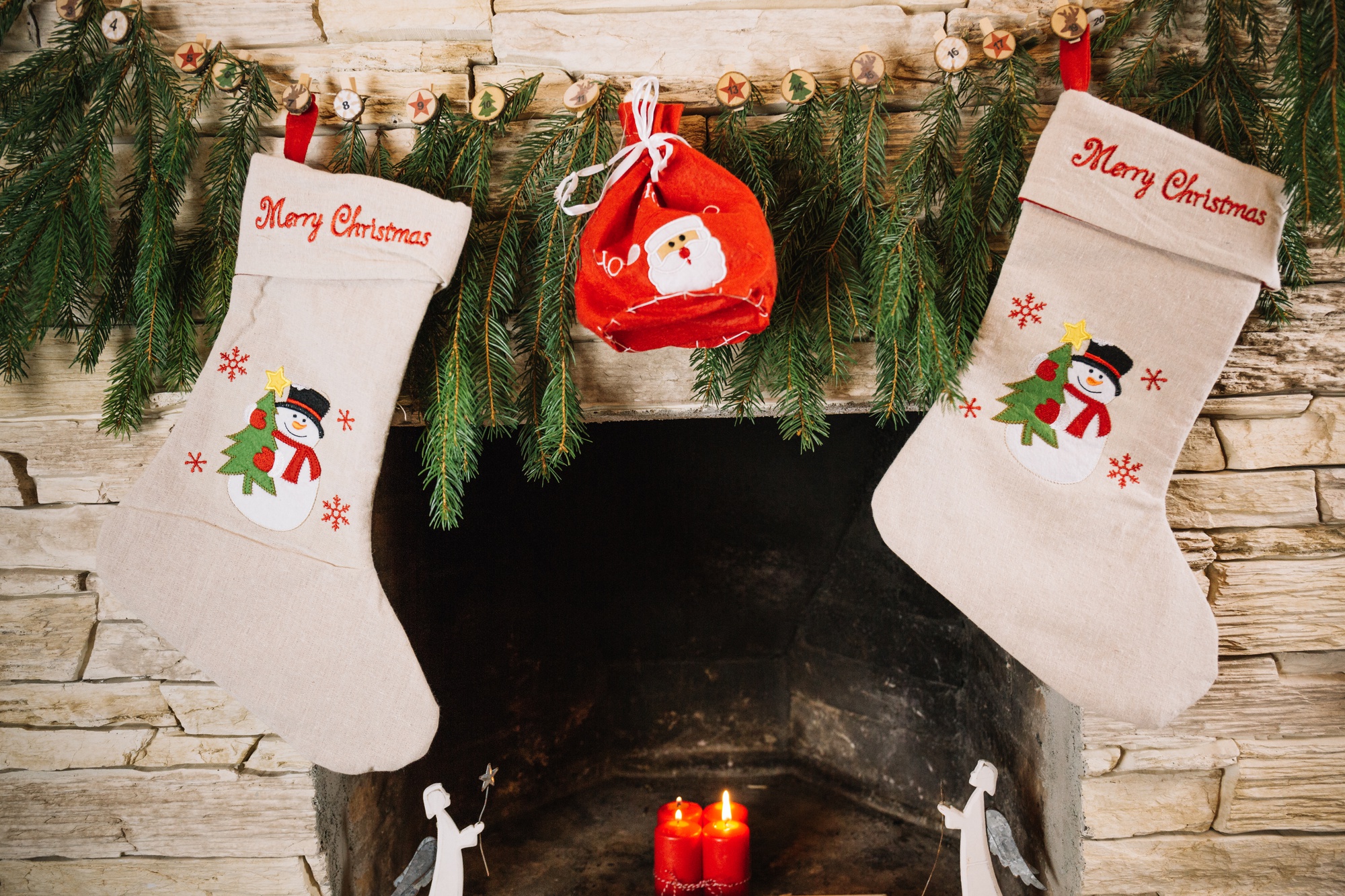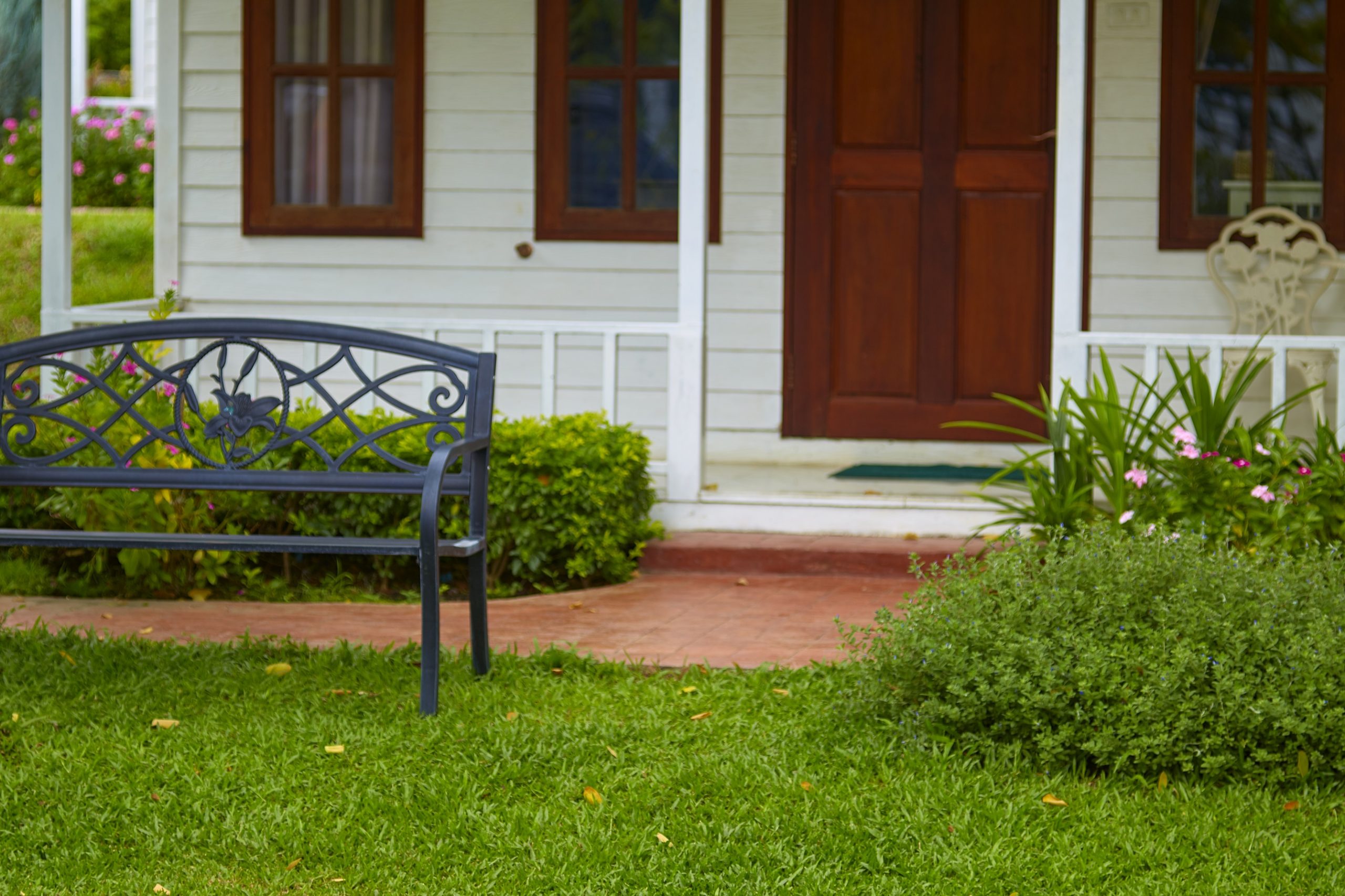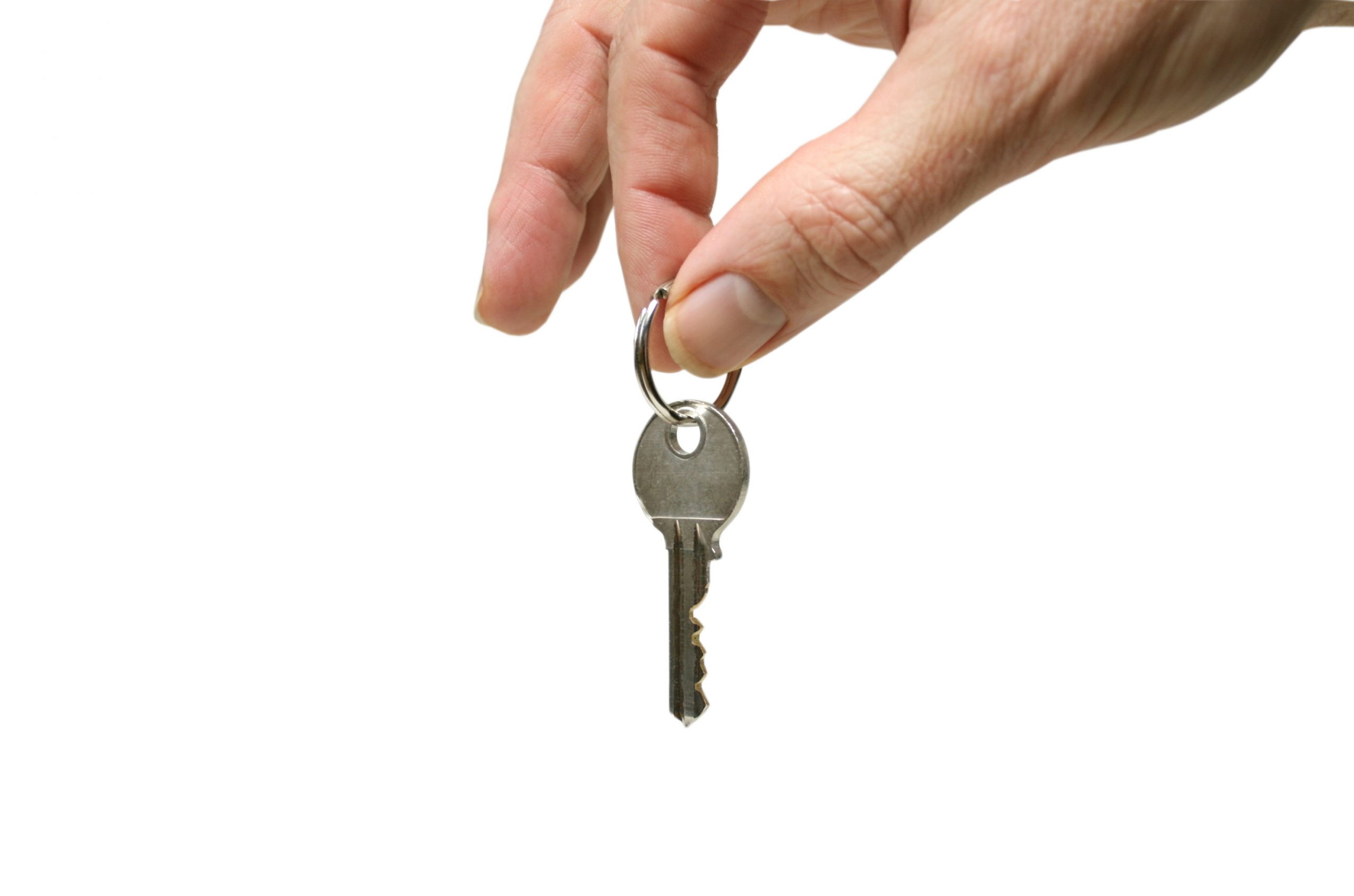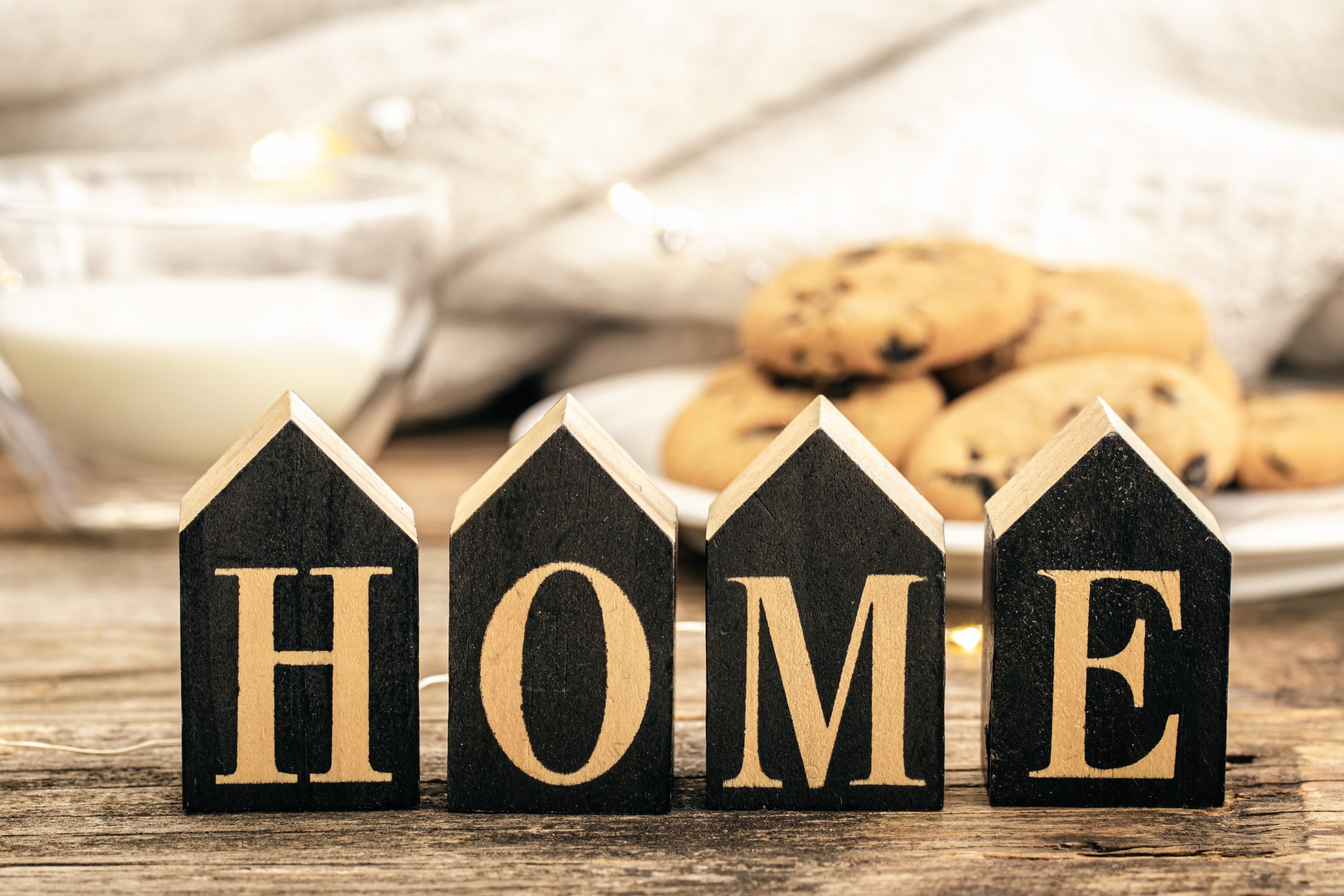Transform Your Garage to Boost Your Home Sale

Every nook and cranny matters when you’re selling a house, including the often-overlooked garage. While it may not be the first thing potential buyers notice, a well-staged garage can add significant value and leave a lasting impression. Think of it as a bonus space that, when presented correctly, can help seal the deal.
This article will walk you through practical tips to stage your garage effectively, making it a standout feature in your home sale. Small changes can make a significant impact, from cleaning and organizing to adding a touch of polish.
Why Staging Your Garage Matters
For many buyers, garages are more than just storage spaces for tools and cars. They represent possibilities—home gyms, DIY workshop areas, or additional storage. An unkempt, cluttered garage might make buyers think your home lacks organization or maintenance, whereas a clean, staged garage sends a message of care and potential functionality.
A National Association of Realtors (NAR) survey found that 27% of seller’s agents believe staging influences buyer perceptions of a home. A polished garage could be the tiebreaker in highly competitive markets or increase offers in slower ones.
Step 1: Declutter and Deep Clean the Garage
Nothing diminishes the appeal of a garage faster than mountains of clutter or lingering mystery odors. Decluttering and deep cleaning the space are the foundation of garage staging.
Remove Clutter
- Go through your garage and sort items into three categories: Keep, Donate/Sell, and Trash.
- Store personal belongings off-site if you’re still living in the home. A clutter-free garage gives buyers a clean slate to imagine their own use for the space.
Thorough Cleaning Checklist
Once it’s decluttered, it’s time for a serious cleanup:
- Floors – Sweep and mop to remove grime; consider using a degreaser for oil stains.
- Windows – Wash any windows in the space to maximize natural light.
- Shelving and Ceilings – Remove cobwebs and dust from corners and shelves.
- Walls and Doors – Wipe down walls and clean the garage door, inside and out. A visibly clean garage speaks volumes about how well you’ve cared for your property.
Step 2: Show Off Storage Solutions
Many buyers see the garage as a way to complement a home’s storage options. Highlight this potential by demonstrating well-planned, organized storage.
Install or Optimize Shelving
Wall-mounted storage systems can instantly transform the space. Use shelves to neatly store:
- Bins that contain remaining personal items
- Sports equipment or small tools
- Seasonal decorations (neatly labeled)
Use Clear or Matching Bins
Invest in clear or uniformly designed storage containers to create visual harmony and make small spaces feel larger. Bonus: These bins also have better photography for listing photos!
Pegboards and Overhead Storage
For smaller tools, install a pegboard on the wall. Showcase this as an easy-to-maintain space for tool enthusiasts. Overhead racks can also demonstrate additional utility without taking up floor space.
Step 3: Upgrade Lighting
Garages often suffer from poor, fluorescent lighting that doesn’t do the space—or your home—any favors. Bright, clean lighting can change a potential buyer’s first impression dramatically.
Replace or Enhance Existing Lights
Swap out old, outdated lighting fixtures for bright LED lights. LEDs are energy-efficient, and their white light creates a fresher, more modern look. Maximize natural light by washing windows and hanging light-reflective finishes on the walls if natural light is available.
Add Task Lighting
If the garage has a workbench space, invest in task lighting to highlight its functionality. Minor lighting upgrades cost very little but make an outsized impact in photos and walkthroughs.
Step 4: Repair and Freshen Up
Buyers won’t spend hours in your garage, but the moments they spend there matter. Simple, inexpensive repairs and updates can elevate the space’s overall perception.
Fix Existing Damage
- Patch up cracks or dings in the walls or floor.
- Ensure the garage door operates smoothly. Address squeaks, dents, or other operational flaws.
Apply a Fresh Coat of Paint
A neutral, bright paint color on the walls can make even the smallest garages feel airy and spacious. Choose off-white or light grays for a polished look.
Upgrade the Flooring
Consider low-cost upgrades like epoxy coatings or modular interlocking tiles if your garage floor is too stained or worn out. These solutions are affordable but make a significant visual impact.
Step 5: Stage for Multi-Purpose Appeal
Buyers love versatility, and your garage should feel like a space that serves multiple purposes. Create “zones” to showcase this adaptability.
Parking Area
Make sure there’s enough clear space to fit a car comfortably. Room for a car shows that a buyer won’t have to choose between parking and storage.
Workstation
Create a small workstation with a basic table and framed pegboard if there’s room. Highlight this area with neatly displayed tools or a craft project in progress.
Fitness Corner
A growing number of people are converting garages into personal fitness spaces. A yoga mat, modest exercise equipment, or clean weights can help buyers see this potential.
Step 6: Captivate with Final Touches
Little details make all the difference. Think of your garage as another room in your house—it deserves the same finishing touches.
Add a Splash of Color
A potted plant near the entrance, a colorful welcome mat, or a decorative storage trunk can soften your garage’s appearance and balance its functional feel with a touch of personality.
Keep the Space Smelling Neutral
Garages can sometimes carry lingering smells of oil, mildew, or paint. Neutralize odors by using air fresheners or simply keeping the space well-ventilated.
Make Your Garage a Selling Feature
A clean, organized, and thoughtfully staged garage sets your property apart. By following the steps above, you can turn what is often seen as just a functional space into a key selling point of your home.
Don’t underestimate the power of a well-presented garage—it enhances buyer perception and may even boost your final sale price.
If you need help analyzing what needs to be spruced up to help sell your home, give me a call; selling homes is my specialty! Kim Shaw 928-710-9148.
50 Clever Christmas Stocking Stuffing Ideas for Every Age

Christmas morning wouldn’t be complete without the joy of opening stockings. The small treasures inside can leave lasting impressions—sometimes even outshining the bigger gifts under the tree. But, year after year, finding creative ideas to fill stockings can become tricky. Fear not! Here’s your ultimate guide to Christmas stocking stuffing ideas that will delight the whole family, from toddlers to grandparents.
Why Stocking Stuffers Matter
Stocking stuffers are a special tradition and a delightful way to express thoughtfulness in smaller, curated gifts. Whether it’s a quirky gadget, a heartfelt note, or a personalized trinket, they’re often the gifts that surprise and charm the most. However, getting it right takes some planning to ensure each item is meaningful and budget-friendly.
This guide will walk you through 50 unique stocking stuffer ideas organized by age group and interests, making your festive preparations a breeze.
Stocking Stuffers for Kids
Toddlers (Ages 1–3)
- Bath Toys
Fun bath critters or floating boats will make bath time extra exciting.
- Board Books
Chunky and colorful picture books are perfect for little hands to explore.
- Building Blocks
Small, toddler-friendly blocks foster creativity.
- Finger Puppets
Great for interactive storytelling and endless giggles.
- Musical Instruments
Tiny tambourines or maracas add rhythm to their world.
Young Kids (Ages 4–7)
- Art Supplies
Think crayons, watercolor kits, or coloring books with their favorite characters.
- Keychains
A whimsical keychain with their name or a fun charm they’ll want to collect.
- Stickers
Packs of themed stickers—perfect for crafts or decorating.
- Mini Games
Travel card games or handheld puzzles to keep them entertained.
- Edible Treats
Include chocolate coins or candy canes for a sweet touch.
Tweens (Ages 8–12)
- DIY Kits
Friendship bracelet kits or slime-making sets make for engaging activities.
- Pop Fidgets
Still a hit—they’re pocket-friendly and fun to play with.
- Reusable Water Bottles
A stylish yet practical addition for school or sports.
- Temporary Tattoos
Cool, non-permanent designs that appeal to their growing sense of style.
- Books
A popular chapter book or middle-grade series to encourage their love for reading.
Stocking Stuffers for Teens
- Gift Cards
A $10–$20 gift card to their favorite store or coffee shop is always a winner.
- Tech Accessories
Stylish phone cases, ring lights for selfies, or wireless earbuds.
- Skincare Essentials
Lip balms, face masks, or travel-sized cleansers for their skincare routine.
- Stationery
Cute notebooks and colorful pens for school (or journaling).
- Socks with Personality
Fun patterns, quirky designs, or cozy slipper socks they’ll actually enjoy wearing.
Stocking Stuffers for Adults
For Him
- Grooming Kits
Compact kits for beard maintenance or shaving accessories.
- Pocket Tools
A multi-tool or mini flashlight for work or the outdoors.
- Gadget Organizers
Cord holders or tech pouches to keep things tidy.
- Coffee Essentials
Single-origin coffee packets or a travel coffee mug.
- Sporty Accessories
Hand warmers for winter hikes or grip socks for workouts.
For Her
- Beauty Minis
Small perfumes, nail polishes, or travel-size serums.
- Chic Hair Accessories
Stylish scrunchies, claw clips, or headbands.
- Reusable Bags
Foldable shopping totes in cute prints.
- Tea Sets
Mini tins of loose-leaf tea or assorted sachets.
- Jewelry Organizers
Compact holders or pouches for travel.
For Both
- Snacks
Gourmet chocolate, trail mix, or artisanal popcorn for indulgent treats.
- Personalized Keychains
Get their initials engraved for a personal touch.
- Mini Board Games
Portable games like Uno or dice games for quick fun.
- Drink Accessories
Whiskey stones for him or a wine bottle stopper for her.
Stocking Stuffers for Seniors
- Brain Games
Crossword books, Sudoku puzzles, or brain training apps.
- Comfort Items
Fuzzy socks, hand warmers, or lavender sachets for relaxation.
- Keepsakes
Photo keychains or pocket-sized frames to cherish family moments.
- Gardening Accessories
Mini seed packets or gardening gloves for green-thumbed loved ones.
- Mini Jars of Honey or Jam
Small-batch goodies for teatime.
Fun and Affordable Stocking Stuffers
Not everything on your list has to be extravagant. Here are some budget-friendly ideas that don’t skimp on thoughtfulness:
- Candy Favorites
Refill their candy stash with chocolate Santas, peppermint bark, or gummy bears.
- Novelty Pens
Fun-shaped pens or ones that light up make delightful, low-cost gifts.
- Travel-Sized Games
Think magnetic chess or tiny versions of classics like Connect Four.
- Holiday Socks
Festive socks that double as classic (yet funny) stocking fillers.
- DIY Vouchers
Create custom “free chore” or “movie night” coupons for experiences instead of things.
For a Personalized Touch
Sometimes, the best stocking stuffers add a dose of thoughtfulness. Here are a few ways to make the experience even more meaningful:
- Handwritten Notes
Include heartfelt messages or write a funny rhyme for each recipient.
- Customized Ornaments
Add their name or a special memory to this year’s holiday ornament.
- Handmade Items
A knitted scarf, a jar of homemade cookies, or DIY bath bombs add a personal touch.
- Photos
Mini photo albums or laminated wallet-sized pictures highlight treasured moments.
Make This Christmas Special
Stockings are more than just a holiday tradition—they’re an opportunity to create lasting memories. Whether you’re filling them with small luxuries, delicious treats, or items that reflect a personal touch, there are endless ways to make your stockings the highlight of Christmas morning.
Kim Shaw
(928) 710-9148
Thanksgiving Tales and Traditions Delightful Discoveries from the Past

Thanksgiving is a beloved holiday in the United States, cherished for its traditions of family gatherings, lavish feasts, and gratitude. However, beyond the turkey and cranberries, Thanksgiving holds a treasure trove of intriguing historical facts and cultural practices that have evolved over centuries.
The First Thanksgiving: More than Just a Meal
When we think of the first Thanksgiving, we often imagine a harmonious feast shared by Pilgrims and Native Americans. In 1621, the event celebrated the Pilgrims’ successful harvest after a brutal first year. The Pilgrims, grateful for their survival, invited the Wampanoag people, who had helped them, to join in the festivities.
The feast lasted three days and featured a variety of foods, including venison, fowl, and native crops such as corn and squash. Surprisingly, turkey was not the star of the meal. Instead, seafood like clams and lobster played a significant role, reflecting the New England coastal diet of the time.
Historians believe this gathering was more about survival and alliance than the symbolic Thanksgiving we know today. The Pilgrims had suffered greatly, and the Wampanoag had recently endured an epidemic. The feast was a moment of respite and mutual support in challenging times.
Evolving Traditions From Pilgrims to Presidents
Thanksgiving did not become an official holiday immediately after the 1621 feast. It took centuries to evolve into the national holiday we recognize today. In 1863, President Abraham Lincoln proclaimed Thanksgiving a national holiday amid the Civil War, urging Americans to pause and give thanks.
Over the years, Thanksgiving traditions have evolved. The iconic Macy’s Thanksgiving Day Parade began in 1924, captivating audiences with its giant balloons and festive floats. Today, millions of people tune in to watch this beloved spectacle, marking the start of the holiday season.
The Great Thanksgiving Feast Beyond the Turkey
Thanksgiving is synonymous with indulgence, and the numbers behind the feast are staggering. Each year, Americans consume around 46 million turkeys on Thanksgiving Day alone.
But turkey is just the beginning. Thanksgiving menus often feature side dishes, from creamy mashed potatoes to tangy cranberry sauce. Sweet potato casserole, green bean casserole, and stuffing are staples that have become beloved additions to the traditional spread.
Desserts are equally impressive, with pumpkin pie reigning supreme. In fact, Americans bake approximately 50 million pumpkin pies each Thanksgiving. Other favorites include apple pie, pecan pie, and even sweet potato pie, each adding a touch of sweetness to the holiday table.
A Nation on the Move Thanksgiving Travel Trends
Thanksgiving is a time for feasting and reconnecting with loved ones. Unsurprisingly, it’s one of the busiest travel periods of the year. According to estimates, over 50 million Americans travel for Thanksgiving, whether by car, plane, or train.
The average distance traveled is 214 miles, and many people opt to drive. This surge in travel often leads to crowded highways and bustling airports as families make their way to Thanksgiving gatherings. Despite the challenges, the desire to be with family and friends remains a powerful motivator.
Thanksgiving is a time to connect virtually for those who can’t make the trip. Technology bridges the distance, allowing families to share gratitude and memories across miles. Thanksgiving fosters a sense of togetherness and appreciation, whether in person or online.
Fun and Quirky Thanksgiving Facts Unveiling the Unusual
Thanksgiving is not without its quirky traditions and fun facts. Did you know that the first-ever Thanksgiving football game took place in 1876 between Yale and Princeton? Thanksgiving football games are a beloved tradition today, with the NFL hosting multiple matchups on Turkey Day.
Another quirky tradition is the presidential turkey pardon, which dates back to President John F. Kennedy in 1963. Each year, the President pardons a turkey, sparing it from being part of the Thanksgiving feast. The lucky bird enjoys a life of leisure on a farm, living out its days in peace.
And let’s not forget the famed “Turkey Trot” races held nationwide. These fun runs encourage participants to burn calories before indulging in the Thanksgiving feast. From 5Ks to half-marathons, Turkey Trots bring communities together for a playful pre-meal workout.
Thanksgiving Quotes Wisdom from the Ages
Throughout history, writers, thinkers, and leaders have shared wisdom about gratitude and Thanksgiving. Here are a few quotes that capture the spirit of the holiday:
- “Gratitude is not only the greatest of virtues, but the parent of all others.” – Cicero
- “When asked if my cup is half-full or half-empty, my only response is that I am thankful I have a cup.” – Sam Lefkowitz
- “Thanksgiving is a time of togetherness and gratitude.” – Nigel Hamilton
These quotes remind us of gratitude’s enduring power and ability to inspire and uplift us.
Happy Thanksgiving!
As you gather around the table this Thanksgiving, take a moment to reflect on the past, savor the present, and look forward to the future. And remember, gratitude is a gift that keeps giving, nurturing our connections, and enriching our lives long after the last slice of pie has been enjoyed.
Essential Tips for Creating the Ultimate Moving Day Survival Kit

Moving day can be a whirlwind of activity and stress. The excitement of settling into a new home is often coupled with the chaos of packing, loading, and organizing. For homeowners, having a well-prepared moving day survival kit can make all the difference between a smooth transition and a logistical nightmare. This comprehensive guide will walk you through everything you need to know to create the perfect moving day survival kit, ensuring your move is seamless and stress-free.
The Importance of a Moving Day Survival Kit
Moving is one of the most challenging tasks a homeowner can undertake. With so many things to juggle, it’s easy to overlook the small details that can make a big difference. A moving day survival kit ensures you have all the essentials at your fingertips, reducing stress and making the process more manageable.
Things to Have Available on Moving Day
Basic Tools and Supplies
Having a set of available basic tools and supplies can save you time and frustration. Items like screwdrivers, pliers, a hammer, and a tape measure are invaluable for disassembling furniture and making last-minute adjustments. Don’t forget a utility knife for opening boxes and cutting tape. Packing tape and zip ties also come in handy for securing loose items.
Cleaning Supplies
Before you start unpacking, you’ll likely need to do some cleaning. Ensure you have a vacuum cleaner, cleaning wipes, paper towels, and trash bags. A mop and bucket are also useful for cleaning floors. Having these supplies on hand ensures you can quickly clean up any messes and create a tidy space for unpacking.
Personal Items
Moving is demanding work, and taking care of yourself is essential. Pack a small bag with personal items like toiletries, a change of clothes, and essential medications. Include snacks and bottled water to keep your energy levels up throughout the day. Don’t forget to charge your phone and pack a portable charger to stay connected.
Things to Pack Last When You Move
Important Documents
Important documents like IDs, passports, and financial records should be kept close at hand. They should be packed last and kept in a secure, easily accessible place. You may need these documents for various reasons during the move, and having them readily available can prevent unnecessary stress.
Valuables and Sentimental Items
Items of high value or sentimental importance should be packed last and kept with you during the move. This includes jewelry, family heirlooms, and irreplaceable mementos. Keeping these items close ensures they don’t get lost or damaged during the move.
Essentials Box
An essentials box contains items you’ll need immediately upon arriving at your new home. This box should include basic kitchen supplies like plates, utensils, and a coffee maker. Pack some basic bedding and towels so you can get comfortable right away. Also, include a few tools and cleaning supplies for any immediate needs.
Ways to Survive Moving Day
Plan Ahead
Planning ahead is crucial for a successful move. Create a detailed moving checklist and timeline to keep you on track. Confirm all moving arrangements, such as hiring movers or renting a truck, well in advance. Having a clear plan reduces last-minute stress and ensures everything goes smoothly.
Stay Organized
Organization is key on moving day. Label all your boxes clearly with their contents and the room they belong to. This will help movers know where to place each box and simplify the unpacking process. Keep a list of all your boxes and contents to ensure nothing gets lost.
Take Breaks and Stay Hydrated
Moving is physically demanding, so taking regular breaks and staying hydrated is essential. Set aside time for short breaks to rest and recharge. Drink plenty of water and have snacks to keep your energy levels up. Taking care of your physical well-being helps you stay focused and productive.
Conclusion
Moving day doesn’t have to be a stressful experience. Creating a well-thought-out moving day survival kit ensures you have everything you need to tackle the day with confidence. Remember to plan ahead, stay organized, and take care of yourself throughout the process. With these tips and a little preparation, you’ll be able to enjoy the excitement of settling into your new home without the stress.
Need help finding your next home? Call Kim Shaw with Better Homes and Gardens BloomTree Realty in Prescott at (928) 710-9148. Her expertise will make the home-buying process a breeze!
The Hidden Dangers of Household Water Leaks and How to Spot Them

Water leaks in your home can be sneaky culprits, silently wasting water and racking up your utility bills. Understanding the common sources of these leaks and identifying them can save significant time, money, and stress for homeowners. This guide will walk you through the common household items that tend to leak and provide practical tips on detecting these issues before they escalate.
Common Household Items That Leak
Faucets and Showerheads
Dripping faucets and showerheads are the most recognizable sources of water leaks. A single dripping faucet can waste gallons of water every day. Over time, this seemingly minor issue can lead to significant water waste and increased utility bills. Regularly check your faucets and showerheads for drips or slow leaks, and promptly replace worn-out washers or seals.
Toilets
Toilet leaks are often silent and can go unnoticed for long periods. A leaking toilet can waste hundreds of gallons of water every day. Common signs of a toilet leak include running water when the toilet hasn’t been flushed, or the toilet tank filling up periodically without use. Adding a few drops of food coloring to the tank and checking if the color appears in the bowl without flushing can help confirm a leak.
Water Heaters
Water heaters can develop leaks as they age, particularly around the base or from the pressure relief valve. These leaks can lead to water damage in your home and reduce the efficiency of your water heater. Regularly inspect your water heater for any signs of leakage, rust, or corrosion.
Washing Machines
Washing machines are another common source of water leaks, especially around the hoses and connections. These leaks can damage your laundry area and adjacent rooms. Inspect the hoses for any signs of wear, such as cracks or bulges, and replace them if necessary. It’s also a good idea to check the connections to ensure they are secure and not leaking.
Dishwashers
Dishwashers can leak due to worn-out seals, faulty pumps, or clogged drains. A leaking dishwasher can damage your kitchen floor and cabinets. To detect dishwasher leaks, run it on an empty cycle and check for any water pooling under or around the appliance.
Refrigerators
Refrigerators with built-in ice makers or water dispensers are prone to leaks. These leaks can occur from the water supply line or the internal components. Check for any water pooling under or behind the refrigerator and inspect the water supply line for any signs of damage. To prevent leaks, regularly clean the drip pan and ensure the defrost drain is clear.
Sinks and Garbage Disposals
Leaks under sinks and around garbage disposals can cause significant damage to your kitchen cabinets and flooring. Loose connections, worn-out seals, or corroded pipes often cause these leaks. Regularly inspect the area under your sinks for any signs of moisture or water damage, and tighten connections or replace seals as needed.
Sprinkler Systems
Outdoor sprinkler systems can develop leaks from broken pipes, faulty valves, or damaged sprinkler heads. These leaks can waste water, increase utility bills, and damage landscaping and foundations. Regularly inspect your sprinkler system for any signs of leaks, such as soggy spots in your yard or unusually high water bills. Repair or replace any damaged components to prevent further issues.
Water leaks in your home can lead to significant damage and wasted resources if left unchecked. By understanding the common sources of leaks and knowing how to detect them, homeowners can take proactive steps to protect their property and health. Regular inspections, maintenance, and prompt repairs can help you avoid the costly consequences of water leaks.
Don’t wait until a small leak turns into a major problem. Start by checking your home for potential leaks today and take the necessary steps to address any issues you find. Remember, a little prevention goes a long way in maintaining the integrity and value of your home.
Need to get in touch with a plumber or handyman? A good source to find companies in your area to help you get taken care of is Angie’s List and Nextdoor. Looking to make a move? I can help you list and sell your home! Contact me at (928) 710-9148.
Transform Your Small Bathroom Into a Spacious Oasis

Are you tired of feeling cramped every time you step into your bathroom? You’re not alone. Many homeowners need help with maximizing space in small bathrooms. But don’t worry—there are plenty of ways to make your small bathroom feel bigger and more inviting. This blog post will guide you through various practical tips and design tricks to help you achieve just that!
Why Small Bathrooms Feel Cramped
Understanding why small bathrooms feel cramped is the first step toward making them feel larger. Most small bathrooms need better layout, clutter, and proper lighting. These factors contribute to a sense of confinement and discomfort. Fortunately, with the right changes, you can make a big difference.
Poor Layout
One of the main reasons small bathrooms feel cramped is a poor layout. When fixtures are too close together or placed in awkward positions, the room feels crowded. Simple rearrangements can free up space and make the room feel more open.
Cluttered Spaces
Clutter is another major culprit. Storing too many items on countertops and open shelves creates visual chaos, making the room appear smaller. Smart storage solutions can help you keep things tidy and organized.
Inadequate Lighting
Poor lighting can also make a bathroom feel small and uninviting. Natural light creates a sense of openness, while artificial lighting can be strategically used to brighten dark corners and improve the overall ambiance.
Smart Storage Solutions
Storage is crucial in a small bathroom. Without adequate storage, clutter can quickly take over. Here are a few clever storage ideas to help you keep your bathroom organized and spacious.
Floating Shelves
Floating shelves are a great way to add storage without taking up floor space. They provide an ideal spot for towels, toiletries, and decorative items and add a modern touch to your bathroom design.
Over-the-Door Racks
Over-the-door racks are perfect for storing items like towels and robes. They use otherwise wasted space, freeing up room elsewhere in the bathroom.
Built-in Niches
Built-in niches offer a sleek and practical storage solution. They are perfect for holding shampoo bottles, soap, and other shower essentials. Building niches into your shower wall can give you storage without sacrificing space.
Maximize Vertical Space
When floor space is limited, look up! Utilizing vertical space can dramatically improve the functionality and feel of your small bathroom.
Tall Cabinets
Tall cabinets offer ample storage without taking up much floor space. They can store everything from towels to cleaning supplies, keeping your bathroom organized and clutter-free.
Hanging Baskets
Hanging baskets provide accessible storage for frequently used items. They can be hung on walls or from the ceiling, freeing up valuable counter space.
High Shelving
Installing shelves high on the wall can provide extra storage without encroaching on your bathroom’s usable space. These shelves are perfect for items you don’t need to access daily, such as extra toilet paper or spare toiletries.
Light and Bright Colors
Color plays a significant role in how spacious a room feels. Light and bright colors can make your small bathroom look and feel larger.
Neutral Palettes
Neutral palettes like whites, beiges, and light grays create a clean and open feel. They reflect light better than darker colors, making the room appear larger and more inviting.
Monochromatic Schemes
Using a monochromatic color scheme can also make your bathroom feel more spacious. Stick to one color family and use different shades to add depth and interest without overwhelming the space.
Bright Accents
Bright accents can add personality to your bathroom without making it feel smaller. Consider using vibrant towels, shower curtains, or accessories to add pops of color.
Optimize Lighting
Good lighting is essential in a small bathroom. It can make the space feel larger, brighter, and more welcoming.
Natural Light
Maximizing natural light can make a big difference. If your bathroom has a window, consider installing sheer curtains or frosted glass to allow light in while maintaining privacy.
Task Lighting
Task lighting is essential around mirrors and sinks. Installing sconces or LED strips around your mirror can provide ample light for grooming and makeup application.
Ambient Lighting
Ambient lighting sets the overall mood of the room. Consider adding ceiling or recessed lighting to brighten the entire space. Dimmer switches can also help create different atmospheres.
Reflective Surfaces
Reflective surfaces, such as mirrors and glass, can enhance the feeling of space in your bathroom.
Large Mirrors
A large mirror can create the illusion of more space. Consider installing a mirror that spans the length of your vanity or even an entire wall.
Glass Shower Doors
Glass shower doors make the room feel more open by eliminating visual barriers. Consider a clear or light-colored shower curtain if a glass door isn’t an option.
Glossy Finishes
Glossy finishes on tiles, countertops, and cabinets can reflect light, making the room feel brighter and more spacious.
Select the Right Fixtures
Choosing the right fixtures can make a big difference in a small bathroom. Opt for space-saving designs that don’t compromise on style or functionality.
Wall-Mounted Fixtures
Wall-mounted fixtures like sinks and toilets free up floor space and create a more open feel. They also make cleaning easier.
Compact Sinks
Compact sinks are perfect for small bathrooms. Look for models with built-in storage or narrow designs to save space without sacrificing usability.
Use of Patterns and Textures
Patterns and textures can add visual interest to your bathroom without making it feel smaller. However, it’s essential to use them wisely.
Vertical Stripes
Vertical stripes can draw the eye upward, making the room feel taller. Consider using striped wallpaper or tiles to create this effect.
Small-Scale Patterns
Small-scale patterns can add interest without overwhelming the space. Look for patterned tiles or accessories that complement your color scheme.
Textured Tiles
Textured tiles can add depth and dimension to your bathroom. Consider using them on an accent wall or as a backsplash.
Clever Use of Accessories
Accessories can enhance the look and feel of your bathroom. Choose items that are both functional and stylish.
Matching Sets
Matching sets of accessories, such as soap dispensers, toothbrush holders, and tissue boxes, create a cohesive look. They can make the room feel more organized and put together.
Plants
Plants can add a touch of nature and freshness to your bathroom. Look for low-maintenance options, such as ferns or succulents, that thrive in humidity.
Artwork
Artwork can add personality and warmth to your bathroom. Choose pieces that complement your color scheme and reflect your style.
Keep It Clean and Clutter-Free
A clean and clutter-free bathroom always feels more spacious. Regular cleaning and organization are essential to maintaining a sense of openness.
Daily Tidying
Spend a few minutes each day tidying up your bathroom. Put away toiletries, wipe down surfaces, and hang up towels to keep the space tidy.
Declutter Regularly
Regularly declutter your bathroom to prevent it from becoming overcrowded. Donate or discard items you no longer use or need.
Conclusion
Transforming your small bathroom into a spacious oasis is possible with the right strategies. By optimizing your layout, maximizing storage, and choosing the right colors and lighting, you can create a bathroom that feels larger and more inviting. Remember to keep it clean and clutter-free to maintain that sense of space.
Kim Shaw
(928) 710-9148
The Ultimate Guide to Impress Buyers at Your Open House

Hosting an open house can be a pivotal moment in the selling process of your home. It’s your opportunity to showcase the best features of your property, create an inviting atmosphere, and make a lasting impression that could ultimately lead to a sale. However, standing out in the competitive real estate market requires more than just opening your doors. Here’s a comprehensive guide on how to prepare for and host an open house that will attract potential buyers and leave them impressed.
Before the Open House: Preparation is Key
Declutter and Depersonalize
The first step in preparing your home for an open house is decluttering and depersonalizing each room. This means removing personal photographs, memorabilia, and clutter accumulated over time. The goal is to create a blank canvas that allows buyers to envision their lives and belongings in the space, not be distracted by yours.
Deep Clean Everything
Cleanliness is everything when it comes to impressing potential buyers. Every surface should be spotless, from windows and floors to countertops and appliances. Consider hiring professional cleaners to ensure that even overlooked areas (think baseboards, ceiling fans, and window tracks) are pristine.
Minor Repairs and Updates
Address minor repairs such as leaky faucets, squeaky doors, or chipped paint. Minor issues can signal neglect to buyers and detract from their overall impression of your home. Additionally, minor updates—like replacing outdated hardware or adding a fresh coat of paint in neutral colors—can significantly enhance your property’s appeal.
Stage Your Home
Staging is more than just tidying up; it’s about creating an environment that highlights your home’s strengths and downplays its weaknesses. Rearrange furniture to maximize space and ensure a logical flow from room to room. Enhance each room with modest decor that adds to the ambiance without overwhelming the senses. Remember, the more comfortable and attractive your home is, the longer potential buyers will stay during the open house.
On the Day of the Open House: Making a Lasting Impression
Curb Appeal
First impressions are enduring, so it’s crucial to ensure your home’s exterior is as appealing as its interior. Mow the lawn, trim hedges, clear the walkways, and add a few plants or flowers for a pop of color. A welcoming entrance sets a positive tone for the rest of the viewing.
Ambience
Open curtains to let in natural light, turn on lamps in darker areas and set the thermostat to a comfortable temperature. Subtle background music and a mild, pleasant scent (think freshly baked cookies or lightly scented candles) can add to the ambiance without overpowering guests.
Information and Snacks
Provide detailed information sheets about your home, including photos, a list of upgrades or recent repairs, and any noteworthy features. Light refreshments can make the viewing experience more enjoyable for guests and give them a reason to linger and discuss the property.
Preparing your home for an open house is an art that involves meticulous preparation, strategic staging, and warm hospitality. By following these steps and executing them with care, you’re sure to make an unforgettable impression that could turn a casual viewer into your home’s new owner.
Call Kim
When it comes to selling your home, I will be with you every step of the way, and together, we can make an open house that will impress your buyers. Give me a call at (928) 710-9148.


 Facebook
Facebook
 X
X
 Pinterest
Pinterest
 Copy Link
Copy Link




